Metazoan Nuclear Pores Provide a Scaffold for Poised Genes and Mediate Induced Enhancer-Promoter Contacts
- PMID: 28366641
- PMCID: PMC7439321
- DOI: 10.1016/j.molcel.2017.02.020
Metazoan Nuclear Pores Provide a Scaffold for Poised Genes and Mediate Induced Enhancer-Promoter Contacts
Abstract
Nuclear pore complex components (Nups) have been implicated in transcriptional regulation, yet what regulatory steps are controlled by metazoan Nups remains unclear. We identified the presence of multiple Nups at promoters, enhancers, and insulators in the Drosophila genome. In line with this binding, we uncovered a functional role for Nup98 in mediating enhancer-promoter looping at ecdysone-inducible genes. These genes were found to be stably associated with nuclear pores before and after activation. Although changing levels of Nup98 disrupted enhancer-promoter contacts, it did not affect ongoing transcription but instead compromised subsequent transcriptional activation or transcriptional memory. In support of the enhancer-looping role, we found Nup98 to gain and retain physical interactions with architectural proteins upon stimulation with ecdysone. Together, our data identify Nups as a class of architectural proteins for enhancers and supports a model in which animal genomes use the nuclear pore as an organizing scaffold for inducible poised genes.
Keywords: Nup98; enhancer; genome architecture; looping; nuclear organization; nuclear pore complex; nucleoporin; poised genes; transcription; transcriptional memory.
Copyright © 2017 Elsevier Inc. All rights reserved.
Figures

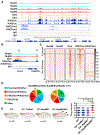
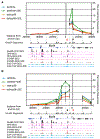

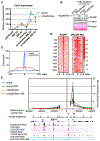
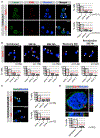
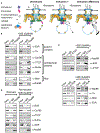
Comment in
-
Gene regulation: The nuclear pore - a scaffold for inducible genes.Nat Rev Genet. 2017 Apr 10;18(5):273. doi: 10.1038/nrg.2017.29. Nat Rev Genet. 2017. PMID: 28400601 No abstract available.
Similar articles
-
Development of a New Model System to Study Long-Distance Interactions Supported by Architectural Proteins.Int J Mol Sci. 2024 Apr 23;25(9):4617. doi: 10.3390/ijms25094617. Int J Mol Sci. 2024. PMID: 38731837 Free PMC article.
-
Ecdysone-Induced 3D Chromatin Reorganization Involves Active Enhancers Bound by Pipsqueak and Polycomb.Cell Rep. 2019 Sep 3;28(10):2715-2727.e5. doi: 10.1016/j.celrep.2019.07.096. Cell Rep. 2019. PMID: 31484080 Free PMC article.
-
The Drosophila MLR COMPASS complex is essential for programming cis-regulatory information and maintaining epigenetic memory during development.Nucleic Acids Res. 2020 Apr 17;48(7):3476-3495. doi: 10.1093/nar/gkaa082. Nucleic Acids Res. 2020. PMID: 32052053 Free PMC article.
-
Chromatin insulators and long-distance interactions in Drosophila.FEBS Lett. 2014 Jan 3;588(1):8-14. doi: 10.1016/j.febslet.2013.10.039. Epub 2013 Nov 5. FEBS Lett. 2014. PMID: 24211836 Review.
-
Nuclear pores in genome architecture and enhancer function.Curr Opin Cell Biol. 2019 Jun;58:126-133. doi: 10.1016/j.ceb.2019.04.001. Epub 2019 May 4. Curr Opin Cell Biol. 2019. PMID: 31063899 Free PMC article. Review.
Cited by
-
Correct dosage of X chromosome transcription is controlled by a nuclear pore component.Cell Rep. 2021 Jun 15;35(11):109236. doi: 10.1016/j.celrep.2021.109236. Cell Rep. 2021. PMID: 34133927 Free PMC article.
-
POM121 is identified as a novel prognostic marker of oral squamous cell carcinoma.J Cancer. 2019 Jul 24;10(19):4473-4480. doi: 10.7150/jca.33368. eCollection 2019. J Cancer. 2019. PMID: 31528211 Free PMC article.
-
Lamins and Lamin-Associated Proteins in Gastrointestinal Health and Disease.Gastroenterology. 2018 May;154(6):1602-1619.e1. doi: 10.1053/j.gastro.2018.03.026. Epub 2018 Mar 13. Gastroenterology. 2018. PMID: 29549040 Free PMC article. Review.
-
Viruses in the Nucleus.Cold Spring Harb Perspect Biol. 2021 Aug 2;13(8):a039446. doi: 10.1101/cshperspect.a039446. Cold Spring Harb Perspect Biol. 2021. PMID: 33753405 Free PMC article. Review.
-
Differential regulation of mRNA stability modulates transcriptional memory and facilitates environmental adaptation.Nat Commun. 2023 Feb 17;14(1):910. doi: 10.1038/s41467-023-36586-x. Nat Commun. 2023. PMID: 36801853 Free PMC article.
References
-
- Agrawal P, and Shashidhara LS (2014). ChIP for Hox proteins from Drosophila imaginal discs. Methods Mol. Biol 1196, 241–253. - PubMed
-
- Arnold CD, Gerlach D, Stelzer C, Boryń LM, Rath M, and Stark A (2013). Genome-wide quantitative enhancer activity maps identified by STARR-seq. Science 339, 1074–1077. - PubMed
-
- Bernardo TJ, Dubrovskaya VA, Jannat H, Maughan B, and Dubrovsky EB (2009). Hormonal regulation of the E75 gene in Drosophila: identifying functional regulatory elements through computational and biological analysis. J. Mol. Biol 387, 794–808. - PubMed
MeSH terms
Substances
Grants and funding
LinkOut - more resources
Full Text Sources
Other Literature Sources
Molecular Biology Databases

